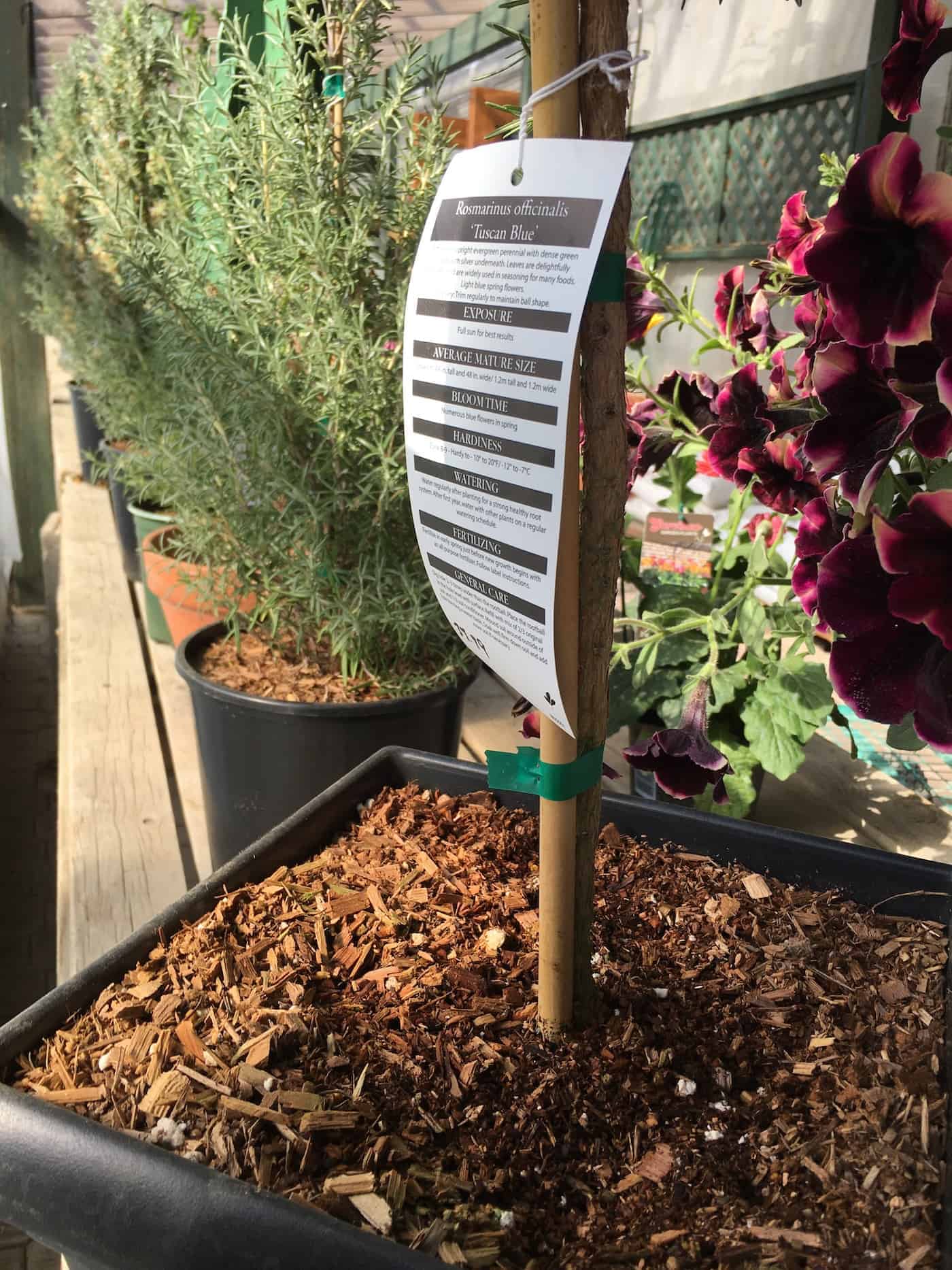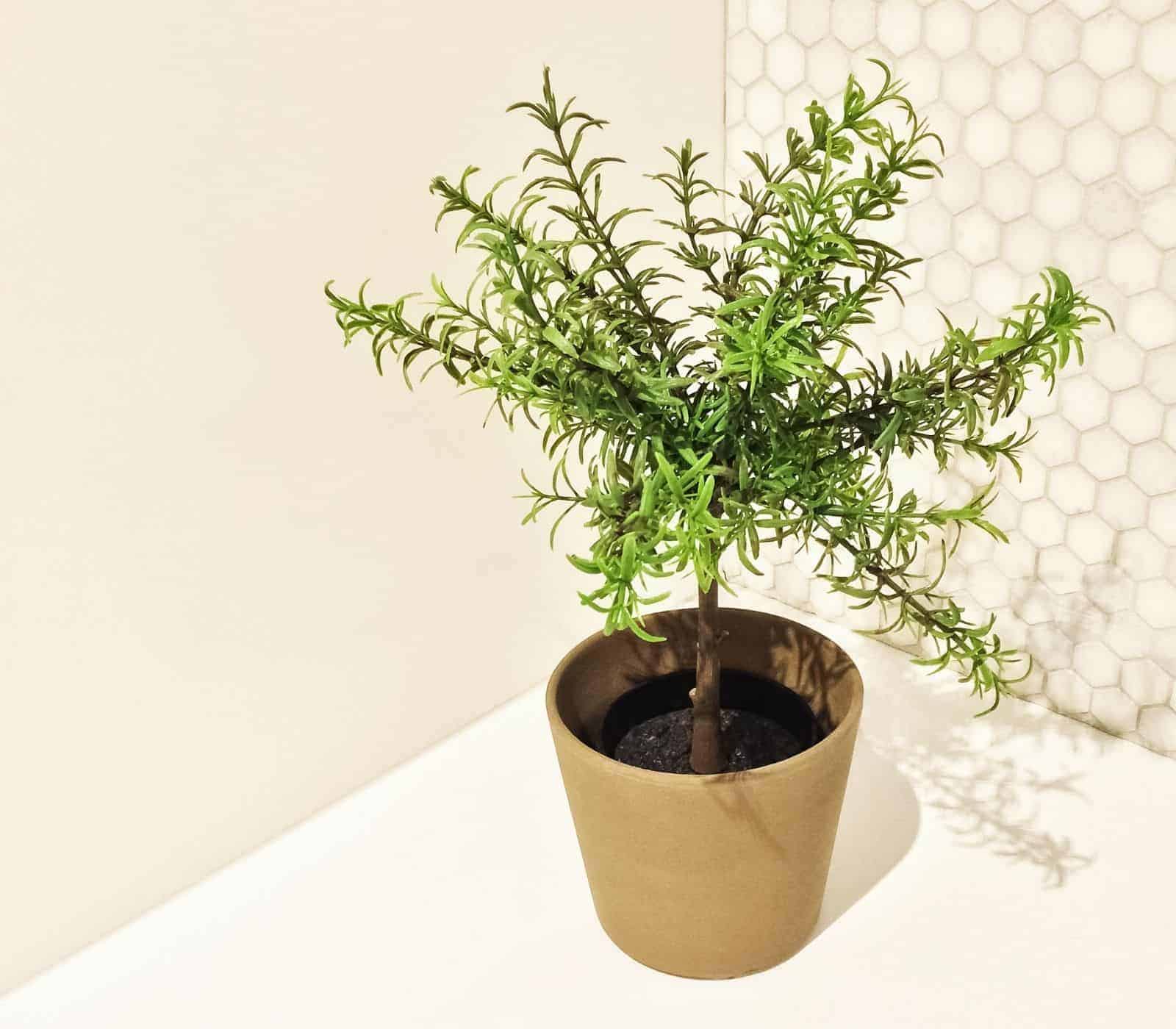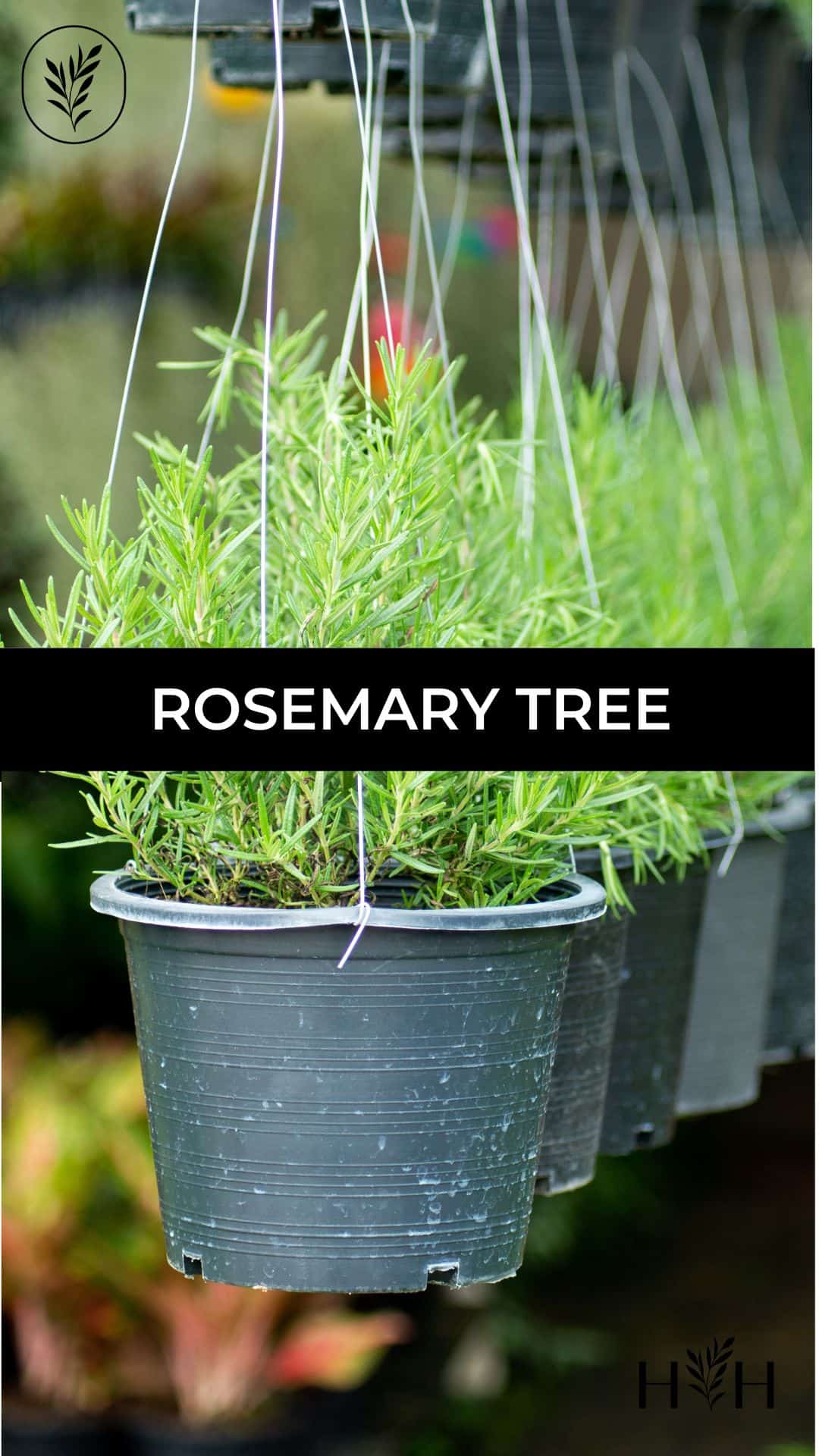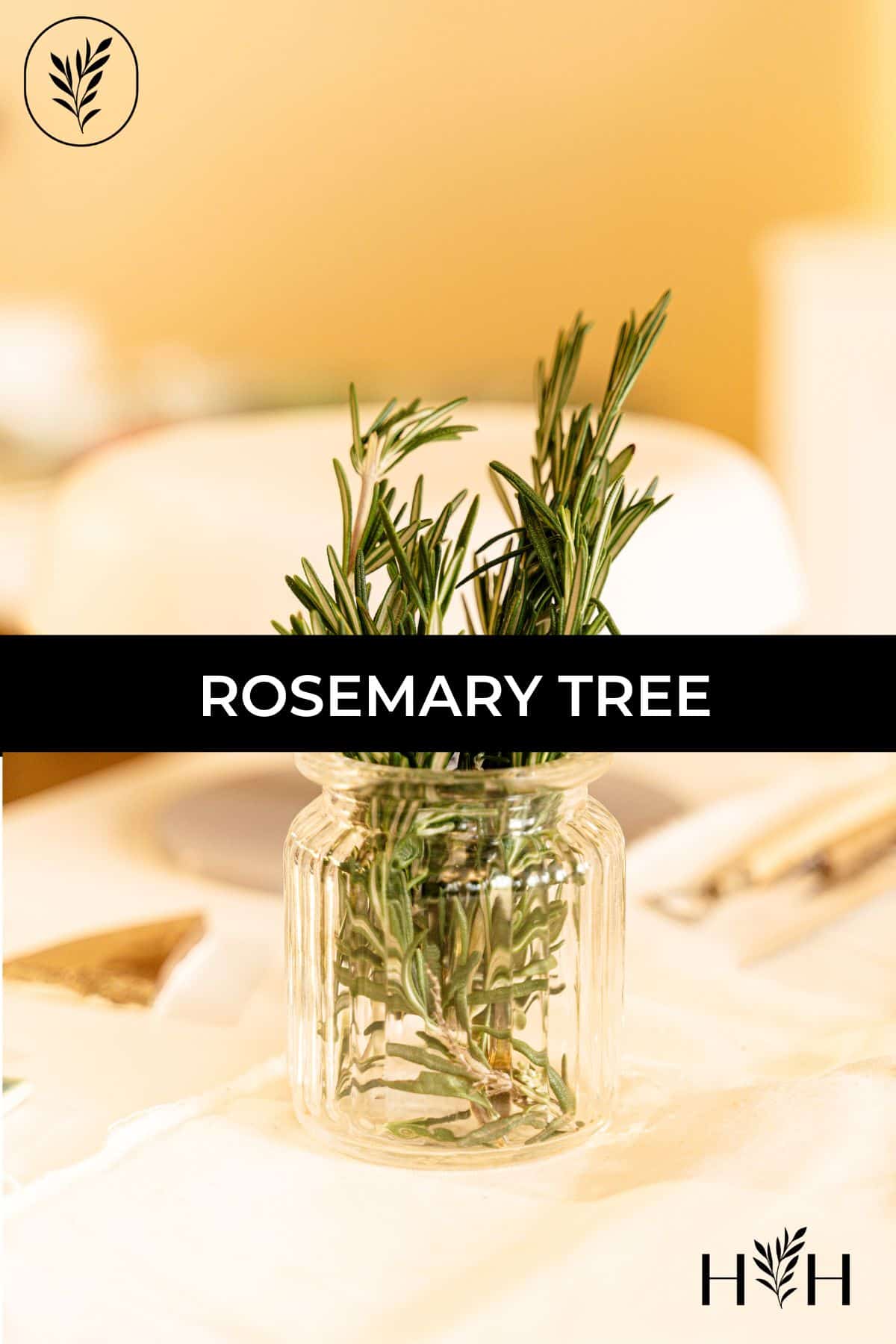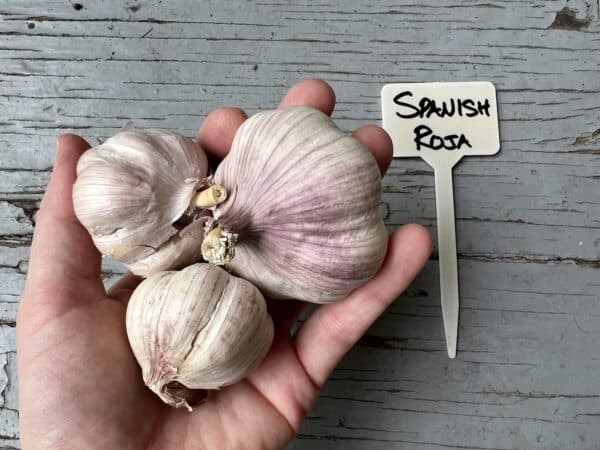Rosemary is a beautiful plant to grow in tree form, generally as a potted rosemary topiary. Rosemary trees are most often formed into a standard ball shape on a long stem, creating a lollipop-like mini rosemary tree. Here are some care tips and ideas for growing your own rosemary topiary tree at home.
Rosemary trees basics
Rosemary trees are regular rosemary plants that have been cultivated into tree-shaped forms. Rosemary typically grows as a small shrub (see photo below), but can be trained in the plant nursery to grow on one elongated center stem. This creates a “standard” topiary from the rosemary plant.
Rosemary trees are generally grown in pots or large planters. This allows them to be grown on patios and to be taken indoors during cold winter conditions. Rosemary plants tend to do well when grown in containers.
While most rosemary trees have a long slender trunk and a classic lollipop shape, some are formed into conical topiaries to create rosemary Christmas trees. These adorable little potted plants are wonderful for living holiday decor and have the same minimal care requirements as standard-form rosemary trees.

Where to buy rosemary trees
Rosemary trees are most commonly sold at garden centers in the spring. Sometimes they are stocked in the wintertime as a houseplant. Spring and winter are the best times to look for these plants in stock.
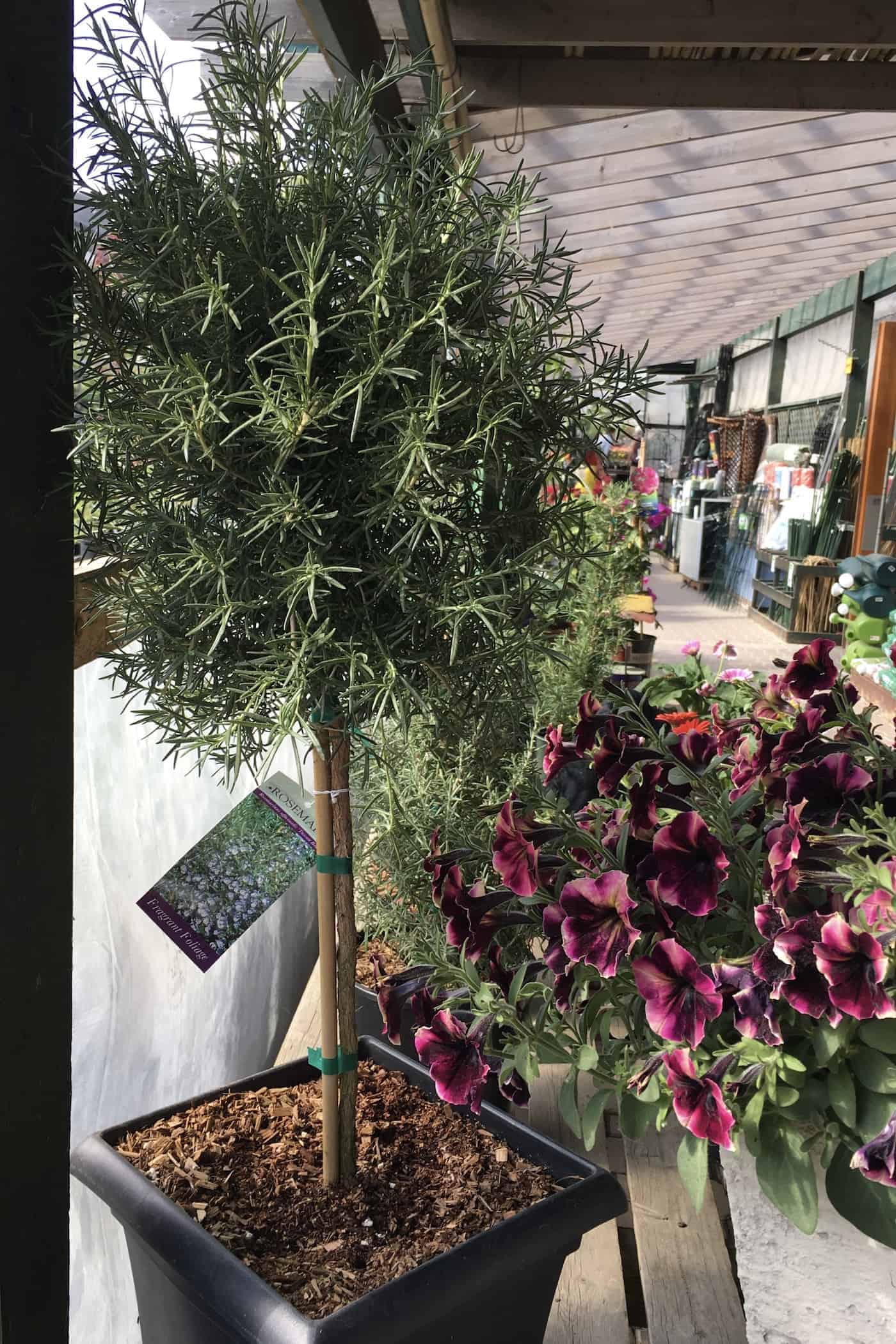
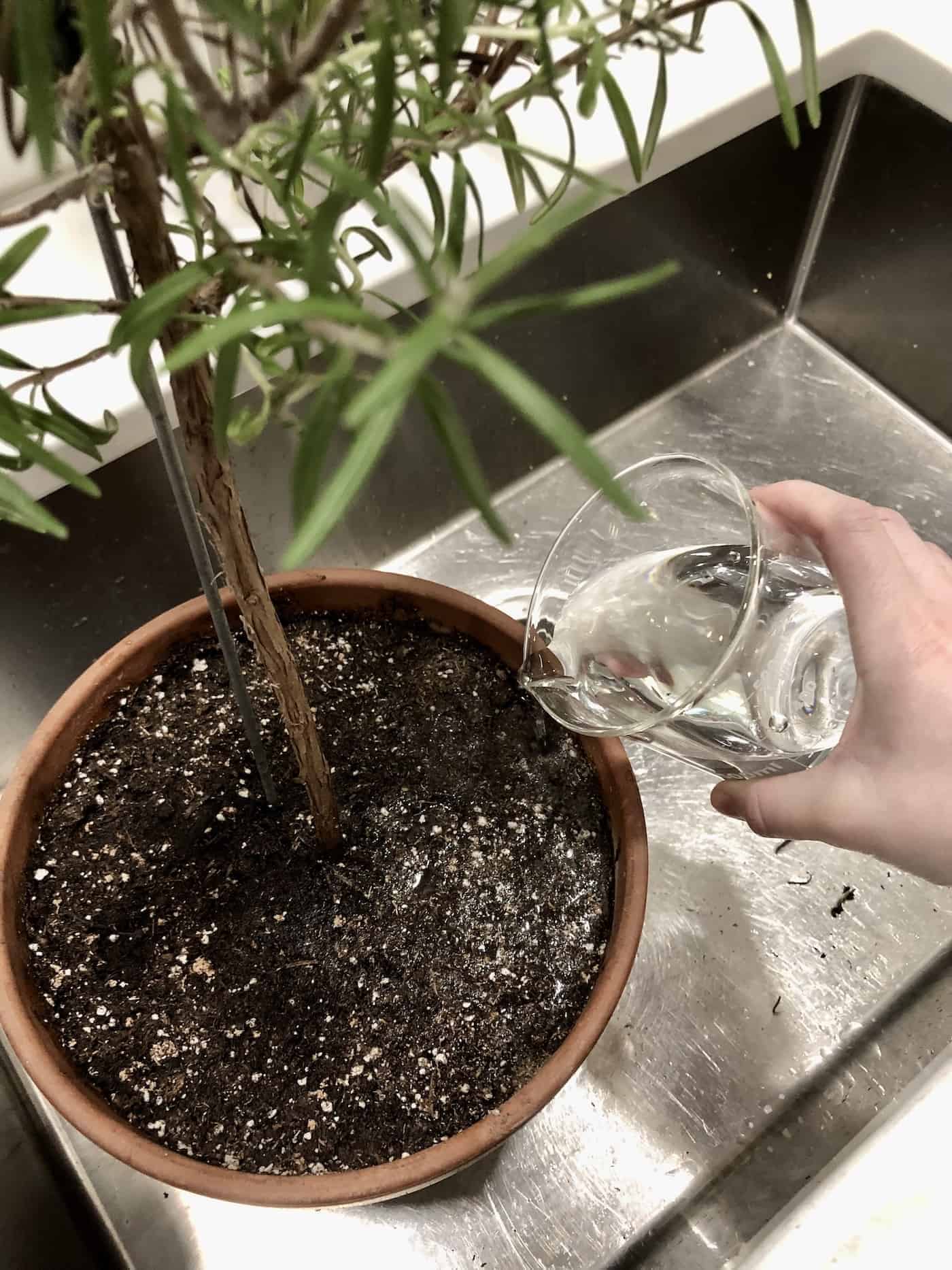
Caring for a rosemary tree
Rosemary trees require the same care as other potted rosemary plants. They do best in a sunny location where the leaves can receive ample sunlight for photosynthesis. They also need to be watered quite often. While these are Mediterranean plants, they do not grow inside limited pots in nature, and therefore need additional water when a container limits their root space.
A high-quality potting mix can help with water and air retention in the soil. Generally, rosemary trees do well in a light, well-draining potting mix that contains perlite as well as peat moss or coco coir. These potting media help the soil to retain the right amount of water while letting excess water drain out. The perlite also helps to trap small pockets of air in the soil, which is vital for the plant’s respiration.
Read more about how often to water Rosemary trees.
Rosemary trees are generally given one hard pruning each year in the spring. The branches can be shortened by one-half their length to create a small frame from which new growth will sprout during the upcoming growing season (read more about pruning rosemary). Giving the tree this hard prune each spring will keep the foliage ball compact and rounded. The topiary can be given light trims throughout the rest of the year to keep it shapely.
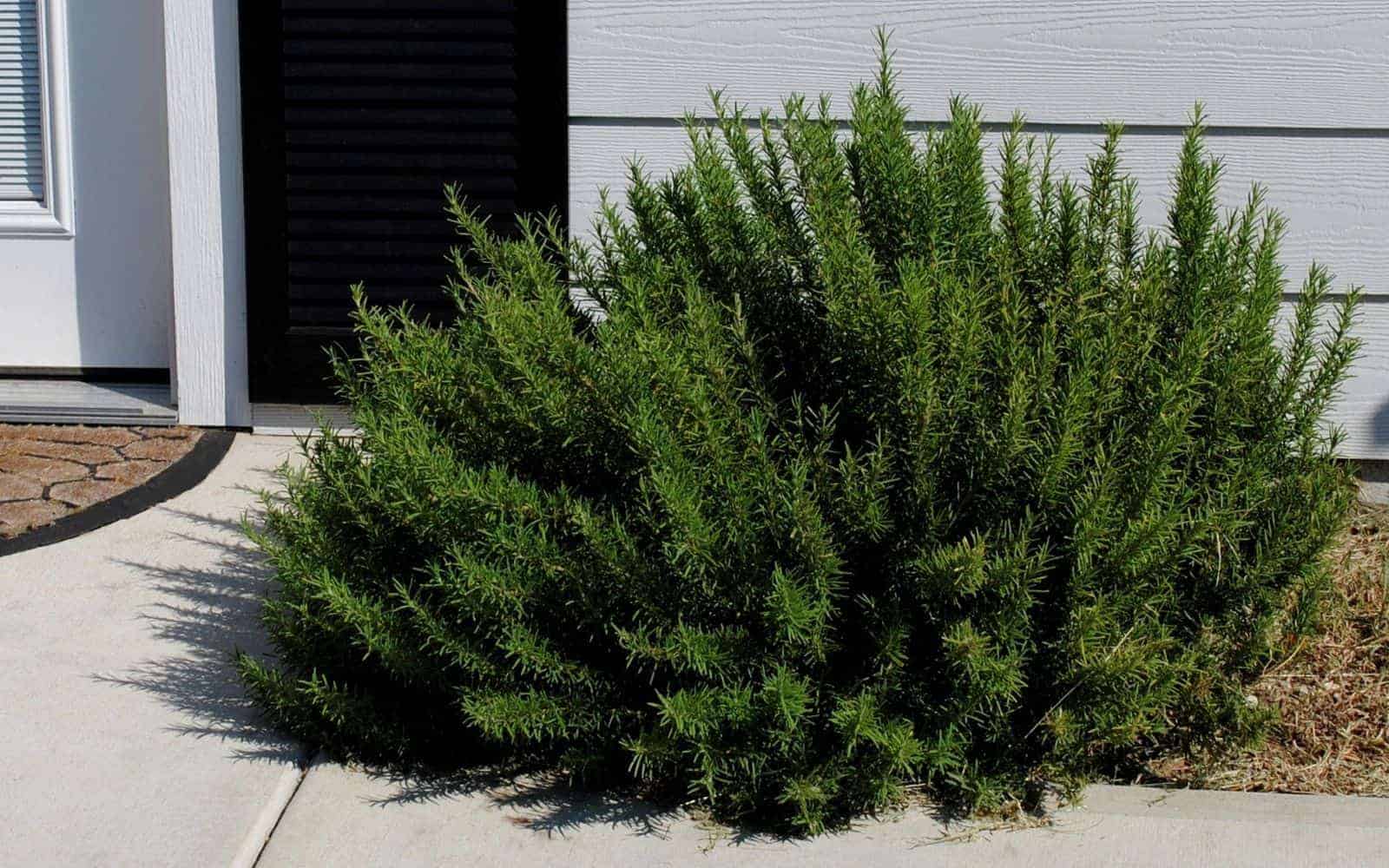
Repotting rosemary trees
Rosemary trees are quite easy to repot. Repotting is best done in early spring if possible. Use a well-draining potting mix and a planter that has a drainage hole in the bottom. Water the tree after repotting. You can add a stake if the tree appears wobbly. These steps also work for repotting lavender trees, as care is quite similar.
Here is a video tutorial showing how to repot a rosemary tree:
Rosemary trees will eventually grow enough roots to become rootbound in their planter. They can be repotted into a bigger planter – generally 2″ wider – as they grow. Once they’ve reached the desired planter size, the rosemary tree can be continually repotted into the same planter.
To repot a mature rosemary tree, first, remove the root ball from the pot. A soil knife can help if the tree is stuck inside a ceramic pot. Once the roots are visible, take time to “prune” off some of the roots from around the outside of the root ball. Some potting mix will fall out of the root ball. Once the root ball is smaller, place it back into the planter pot with fresh new potting mix. Water well after repotting.
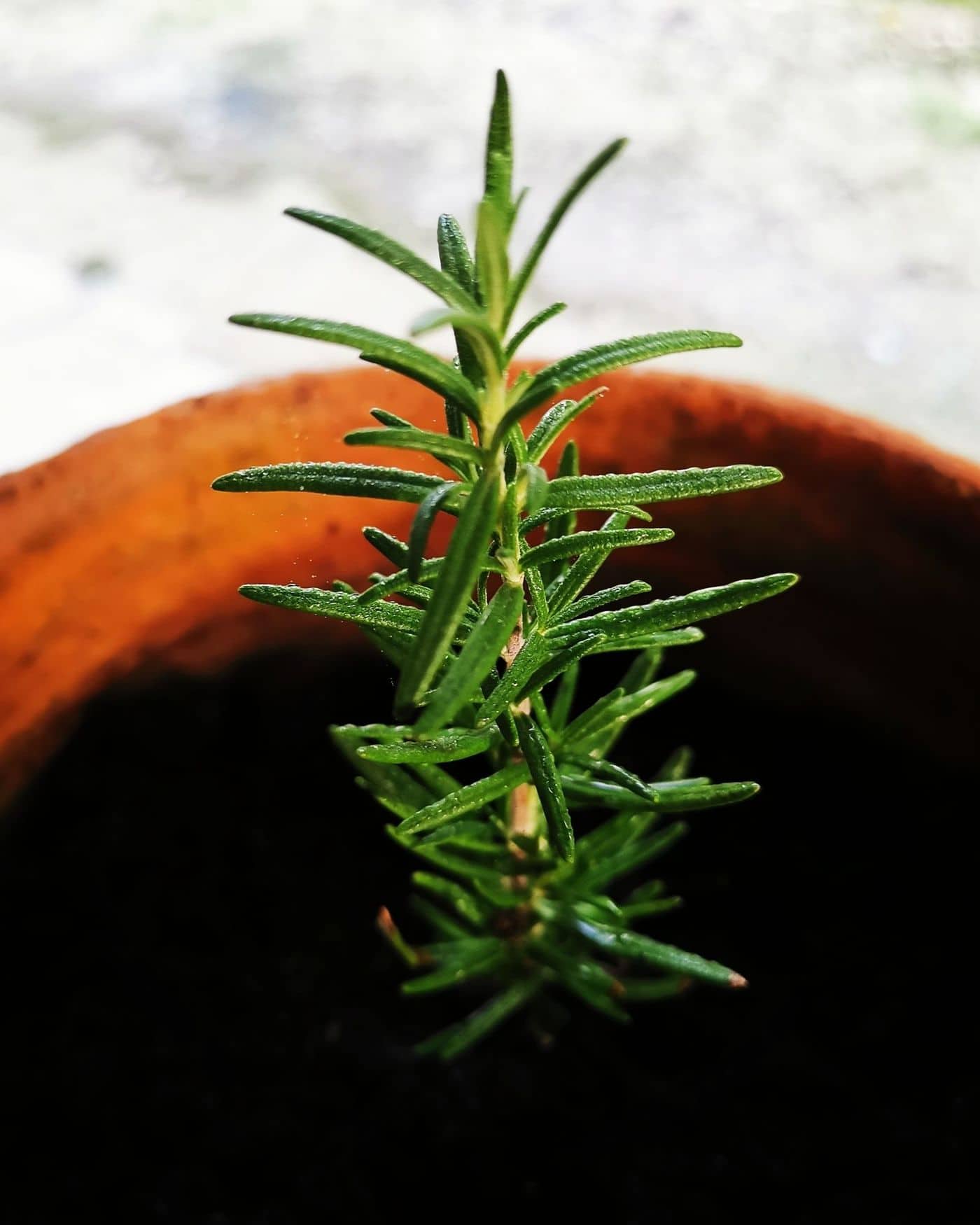
How to make a rosemary tree topiary
Making your own rosemary tree is relatively simple. Rosemary is well-suited to topiary due to its evergreen leaves and its suitability to being grown in a pot. Certain varieties of rosemary are more upright than others (such as Majorca Pink Rosemary, Miss Jessup’s Upright Rosemary, Salem Rosemary, and Blue Spires Rosemary), but shrub-type cultivars and culinary favorites like Tuscan Blue Rosemary can also be trained into rosemary trees.
Start with a potted rosemary cutting or a small rosemary plant. Select one stem to become the future trunk. A strong center stem that is already growing upright is preferable but not required. Cut the other stems back to the base, leaving one stem. If the plant is weak, shorten the other stems (rather than removing them entirely) to allow the leaves on those plants to photosynthesize and help thicken the future trunk. Stake the one center stem upwards with a chopstick or bamboo stake.

Continue to monitor the rosemary plant as it grows. Remove any new stems that shoot up from the base of the plant (or at least ensure they stay shorter than the dominant center stem/future trunk). When the center stem/trunk reaches the desired final height of the rosemary tree, pinch off the tip of the green center stem/trunk. This will encourage the plant to start to bush out horizontally.
Keep pinching out stems that grow towards the top of the plant. Once the rosemary tree becomes a bit bushy, remove all other stems from around the base and any leaves that remain on the bottom two-thirds of the center trunk. The rosemary tree should now have its basic form.
